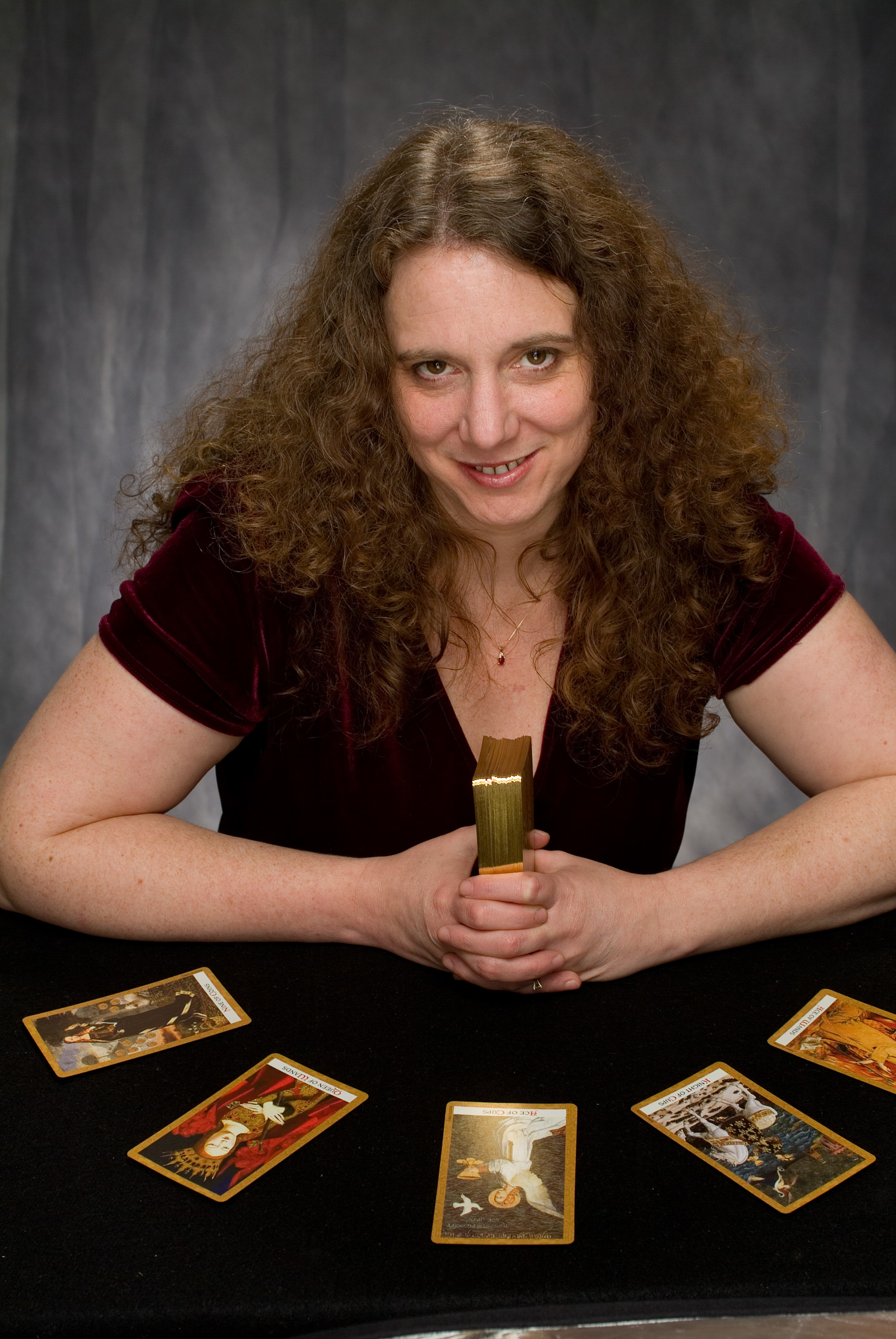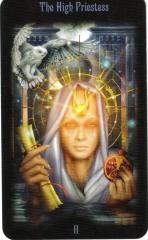
Welcome to my personal blog.
Here you will find my musings, thoughts and observations, all inspired by my experiences as a full-time professional tarot reader.
A Lesson in Intuitive Tarot: December Tarot Meetup at Panera in Lutz
I expected a small group for our second-ever Tampa Bay Tarot Meetup at Panera Bread in Lutz on Sunday, December 7th. I had received a ton of emails; holiday parties, home renovations and seasonal sniffles were going to take a toll on our turnout.
I had a problem, too. Seasonal allergies had taken away my voice – literally. I woke up with laryngitis.
There were five of us at the meetup. Since things are rarely “accidents,” I interpreted my ailing throat as a sign I needed to let the students do the talking. Today, I wasn’t there to teach, I was there to listen and support.
This experience really taught me something important about teaching in general, and about teaching tarot in specific.
You see, I am an interpretive reader. That doesn’t mean I don’t use my psychic ability, or communicate with spirits, in a reading. I just believe that a solid knowledge of tarot archetypes and key words help to stimulate the intuition by giving us the language we need to accomplish the communication.
That means my tarot teaching is associative and interpretive. I ask my students to make associations between the Four Elements, numerology and astrology as they learn the cards, and I ask them to memorize key words.
As it turned out, none of my four attendees had memorized key words in their tarot toolbox. Worse, a few of them felt badly about that fact, sheepish that they hadn’t done their homework.
The theme of our meeting was “techniques practice.” Clearly, the only technique we could practice was intuitive reading.
Each person performed a short reading for another attendee. Then we did some group readings, where each person pulled a card and put them together to form a comprehensive answer. Finally, each person performed a seven-card reading for themselves.
This meetup had a lot of aha moments for everyone, but perhaps especially for me. In watching the students struggle with, and then master, the basic skills of intuitive reading, I realized the following important points to be true.
Whether from intuition or from past study, students know a lot more about the cards than they think they do. The anxiety of being “on the spot” in a reading, and of not having a solid memorized list of key words, seems to shut down the intuition.
Even beginning students need to focus on grounding, centering and breathing in order to tap in to the intuition and leave anxiety behind.
We can encourage students to notice different things about the cards by asking questions, such as “What color do you see most predominately?” or “What is this person doing in this image?” or “How does this image make you feel?”
The next step is encouraging the student to say what they feel. Two of our student readers reported strong feelings that had turned out to be accurate. They were embarrassed to share those strong feelings at first.
After each person used their intuition (and whatever knowledge of the cards they had) to perform a reading, I had them look up the meanings of the cards in their books. They were pleased and surprised to see that their intuition had led them to give accurate readings, and that what they said about the cards was in fact extremely close to the book meanings.
I will continue to teach the importance of memorized meanings, archetypes and tarot study. At the same time, I will add some new teaching methods to my own toolbox.
Anxiety – the fear of being wrong – may be a new tarot student’s biggest enemy. Allowing students to look at the cards and simply say what they see very quickly helps them to see their own abilities, as well as the cards’ astounding abilities to give us truth.
Once that anxiety is gone and students feel free to communicate with their cards, the acquiring of the larger body of knowledge should come somewhat less painfully.
Sometimes I say the prayer, “Lord, put your hand over my mouth.” Well, this time the Lord did in fact silence me. In that silence, I learned something new about teaching tarot, and my students learned something about their own ability to read tarot.
Today my voice has returned.
Our next meeting of the Tampa Bay Area Tarot Meetup is February 1. Join us!
The Middle Way of Tarot
 There is a lot of misunderstanding of tarot in the world. Some of it comes from well-intentioned tarotists.
There is a lot of misunderstanding of tarot in the world. Some of it comes from well-intentioned tarotists.
For once, I am not talking about the Gypsies who use tarot to swindle their clients. We already know they are propagators of misunderstanding. I am referring to smart, spiritual tarot students and practitioners who haven’t yet found the sweetest spot of tarot interpretation and understanding – the Middle Way.
The concept of the Middle Way (or the Middle Path) is Buddhist, although its tenets show up in many philosophical teachings. A secular way to describe it is the happy medium, which is also a great play on words when talking about tarot.
The idea of the Middle Way, as I understand it, is that we find enlightenment in the right balance, rather than when we delve into any particular extreme.
Many tarot cards speak directly to this spiritual concept of right balance. Those cards include the High Priestess, the Two of Pentacles, Justice and Temperance.
But what does this have to do with understanding the concept of tarot reading?
I have noticed that there exists amongst tarot students and practitioners those who believe intuition is all that is needed to read tarot. Study is an unnecessary burden and memorization is a waste of time.
There are also those tarotists who espouse the diametric opposite of that concept by insisting a particular card means exactly one thing – the same thing – each and every time it appears. For those readers, a singular clearly memorized definition for each card is the whole of tarot interpretation from which none should stray.
I think the truth is somewhere in the middle, between these two limited philosophies.
To those who feel that tarot is about intuition, and only intuition, I say this. Yes, a brand new reader can find truth simply by looking at the cards. Yes, there are skilled intuitive professional readers who use tarot to inspire their readings even though they haven’t a clue about the traditional interpretations associated with each card.
But to say that intuition is the whole of tarot reading is like saying use of a scalpel is the whole of performing surgery. Some surgeries require only a scalpel. Every surgeon must know how to wield a scalpel. But surgeons need to use other tools in addition to scalpels or else they are dangerously limited in their skills.
The didactic memorizers are just as limited. It is crucial to understand some traditional interpretations for each card. However, we must leave room for the great number of possible interpretations, and for the play of intuition. Circumstances matter a lot. For example, we know that the Page of Cups could indicate a young child. But if a happily childless adult person were to ask the cards “What is my greatest challenge?” and receive the Page of Cups, “a young child” is not a great answer. But perhaps “learning to express your heart,” another interpretation for this card, would make perfect sense.
In this case, study provides the possible answers, while intuition picks the right answer.
Intuition works with tarot in other ways, too. It may draw our eyes to a particular image within a card, or inspire us to pay attention to the way two cards blend. It may give us psychic information beyond what we see in the cards.
Study offers us the opportunity to learn a wide variety of possible interpretations and depictions for each card. Rather than being confused and frustrated by the number of possibilities (and the fact that some of those possibilities are in conflict) we need to embrace all of the possibilities. Then we can allow intuition, circumstance and neighboring cards to sharpen our interpretations.
Study also allows us to understand the synchronicities of the cards. We learn a great deal when we explore the symbolic, elemental, astrological, numeric, archetypal and Kabalistic associations of tarot. We find deeper meaning in the cards, and learn to use tarot as a book of spiritual wisdom, as well as a tool of divination.
Tarot cards are designed to help us open the third eye and become more psychic. The more we study tarot, the more psychic we will be. To try to choose either study or intuition makes no sense because tarot study and intuitive reading work together to enhance each other.
To get the most out of tarot reading, whether as a student, a hobbyist or a professional, we need the Middle Path. If we are all intuition and no study, we lose the spiritual message of the cards and the benefit of their tradition. If we rely only on simple memorized key words we are missing the depth of meaning and wealth of information that a tarot reading can offer.

